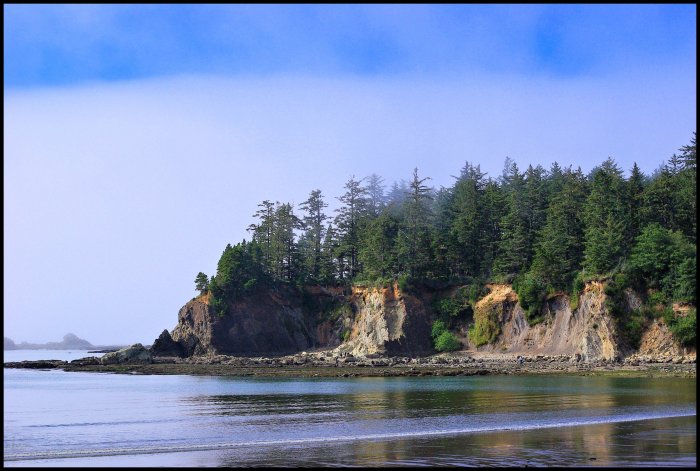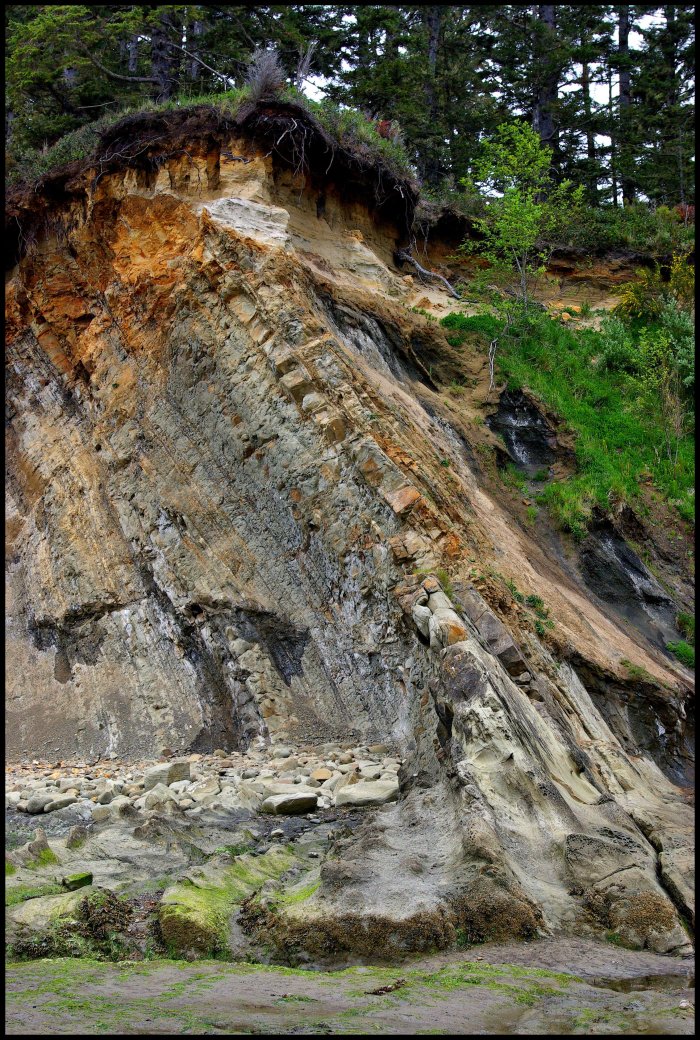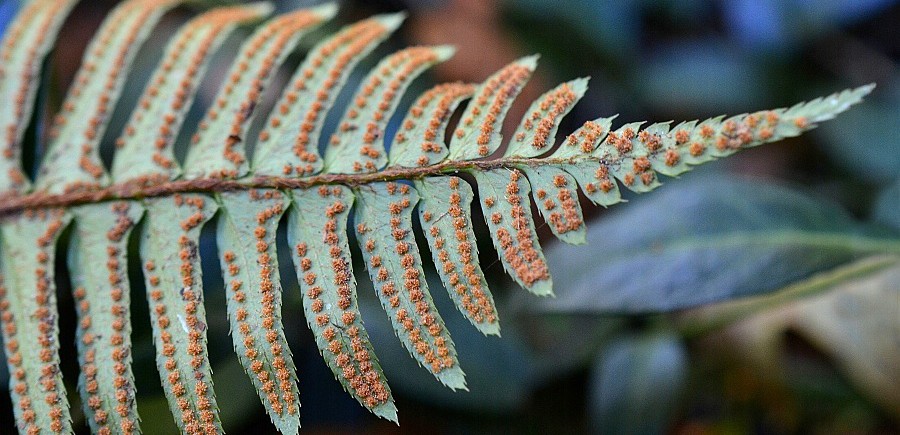
In every outthrust headland, in every curving beach, in every grain of sand there is the story of the earth.
— Rachel Carson (1907-1964)
🌿 🌿 🌿 🌿
Two hundred and sixty-five miles from home found us on the southern Oregon Coast on the beach of Sunset Bay, which lies twelve miles southwest of Coos Bay, and two and a half miles south of the charming fishing village of Charleston.
For me, Sunset Bay is a place revisited; a place I recall from my childhood when I spent summer vacations with my Aunt and Uncle, and three cousins that lived across the Coos Bay. My memories of this place are fond ones—of playing in the surf, exploring tide pools, and building sandcastles with moats; carefree days when all you had to do was be a kid. Now, many years later, I walk the same beach with my husband, and it felt good to be back.

At the edge of a rugged shoreline, bordered by lush green forest is Sunset Bay. A calm, horseshoe-shaped basin, its waters are home to fascinating sea creatures, including red abalone (Haliotis rufescens). Surrounding the bay are sandstone cliffs sculpted by wind, water, and earthquakes. It’s what gives Sunset Bay its compelling features complete with fossils, fault lines, coal seams, tilted outcroppings, reefs, islands, hundreds of tide pools, and ancient tree roots on the beach.

At the mouth of the bay is a narrow inlet where just beyond is the areas most prominent island Qochyax (Coke-yaw) that connects to the mainland at Gregory Point by way of a stony land bridge accessible only during low tide. The way the land is shaped above and beneath the water protects the bay from heavy surf. It is this reason that many a shallow draft vessel (Dories) sought refuge inside the bay during violent storms.

We began our beach walk at Big Creek that empties into the bay from its south side. At the mouth of Big Creek, and with the tide out, we got our first glimpse of some very large tree stumps (roots really) of what was once a thick spruce forest. The end came for the spruce forest about 1,200 years ago when a massive earthquake struck the coastline and caused it to drop, thus drowning the forest. Only at low tide are the roots visible clutching the sand like octopus arms.
During the past 3,500 years, at least a half-dozen giant earthquakes registering 9 on the Richter scale, or of greater size, have struck the Washington and Oregon coastlines. There are four ancient fault lines of Sunset Bay, two within the bay, and two outside the bay—one to the North and one to the South. Geologists call this the Coaledo Formation, which is divided into three parts—upper, middle, and lower. The upper and lower formations contain hard rock, while the middle formation is made up of soft rock. Mineral deposits include shale, siltstone, sandstone, and Oregon’s largest coal deposit that was mined from the 1850s to the 1940s.

Just north of Big Creek along the beach were more giant spruce roots. These roots, though part of the same spruce forest, are different from those in the creek because they are uniquely associated with sphagnum, a.k.a. “peat moss.” I knelt and ran my hand across the centuries old, seawater-steeped roots wrapped in dried green seaweed, and they were hard as stone. I imagined what this place looked like before the earthquake, and it was marvelous!

Up ahead, two kayakers readied their gear for a day of fishing. Sunset Bay is a kayakers dream, and one of the best ways to see the outer formations of the bay. Nearby, a curious formation ran vertical across the center of the beach from the parking lot to the bay. The formation, outlined with rocks that looked deliberately placed, and what looked like an old boat ramp, was in fact a fault line.



At the north end of the bay, was the second fault line. Here, the scene was much more dramatic with large slabs of rock that tilted at forty-five degree angles, created when the Pacific plates collided. Also interesting were the “honeycombs” in the sandstone boulders; a unique unity between sand, seawater, and algae known as “salt weathering.” Without the thin layer of algae to protect them, the honeycombs would not exist.

Among the many tide pools, sea snails, anemones, sea stars, mussels and sea squirts waited patiently for an incoming tide. They didn’t have to wait long. Slack tide was over, and the sea was creeping in. Our search for fossilized sharks teeth, burrowing crabs and clamshells that are said to exist here, would have to wait.


Gulls gathered at the mouth of Big Creek in noisy anticipation for a meal that would be delivered to them on the incoming tide. As for the ancient spruce stumps of Sunset Bay, they would not be seen again until the next low tide.
Copyright 2012. All rights reserved.
____________________
Sources▼
🌿“Sunset Bay-Shore Acres-Cape Arago: The Geologic Story” 2008—by George Mustoe (An informative booklet about the Sunset Bay area, available at the Gift Shop.)
🌿Visit Live Cam of Sunset Bay: http://www.oregonstateparks.org/conditions/sunsetbay

I’m looking for pictures of the Bay from the 1950’s before the large rocks at the mouth of the Bay rolled out to sea.
That’s fascinating, Esther, I had no idea about large rocks being washed out to sea. I’m afraid that’s before my time, but wish you all the best in your search for them.
My mother lived in a tent at Sunset Bay the first summer of her marriage in 1931 or 1932. My father would fish all day and come into the bay at night. Later they lived in Eastside, and North Bend.
That is really something, and adds additional wonderment to this very special place. Thanks for sharing. 🙂
What a lovely place and interesting geologic history. I enjoyed reading this very much. I live in the east so exploring the west is a vicarious experience. Thanks so much.
Thank you, Jude. I feel the same about the East Coast. Have never been, but would love to visit someday. So much beauty everywhere. So much to discover and learn. Glad we have the opportunity to share it!
I agree. I’m having fun reading and writing within the blog community. I plan to live out my life enjoying the beauty.
Cheers to that!
Very interesting story… it is intriguing to see how the ancient stumps can hide in plain sight!
Thank you, Pierre! This is a remarkable place, full of wonder, and one of my favorite beaches to visit. In fact, I’m going to be visiting the area next week. 🙂
Very interesting story — and beautiful photos — thanks Julie. Reminds me of my exploratory walks at Pacific Rim National Park on Vancouver Island.
Thank you, Thad! This is one of my favorite places along the Oregon Coast. There is so much to see, and so much history involved here. I find it absolutely fascinating. (Also, will have to add the Pacific Rim National Park to my list of places to visit.)
PRNP was the terminus for a cross-country trip that my best friend and I made in ’73. We camped on the beach in the lee of a very large washed-up log. Slides still need to be scanned (looking for a dedicated slide scanner). Made a solo trip there in ’94. Have a few photos from second trip that might work as a basis for a new blog post.
Thank you Angela for visiting and for the “Like”! : )